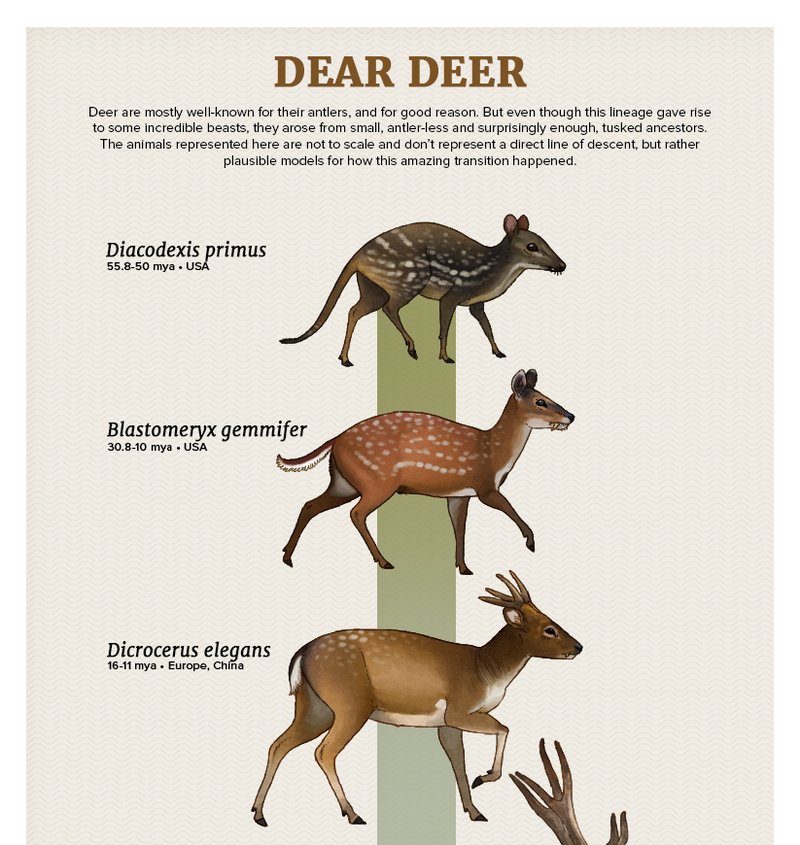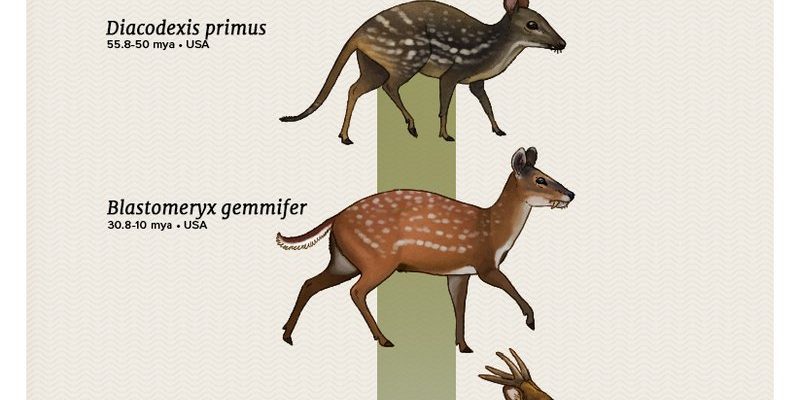
Just like humans have ancestors that tell the tale of our development, deer also have a complex evolutionary history. It’s like opening a book filled with wild, unexpected chapters. From the earliest members of their family to the diverse species we see today, the journey of deer is both intricate and captivating. So, grab a cup of coffee, and let’s explore the evolutionary path of these remarkable creatures together.
The Origins of Deer: A Glimpse into Prehistory
To understand deer today, we have to go back about 20 million years. During this time, the first deer-like animals roamed the Earth. These early creatures belonged to a group called *Cervidae*, which includes all modern deer. Imagine stepping into a lush landscape filled with various plants and animals. The environment was different back then, which shaped how these early deer adapted to survive.
These ancestors were not much like the deer we know today. They were smaller and had different features. Over time, they adapted to their surroundings, developing characteristics that helped them thrive. For example, they grew longer legs to escape predators and increased their grazing abilities to feed on available vegetation. It’s like nature’s version of a reality show, where only the strongest and smartest survive.
The Rise of Modern Deer Species
As time marched on, deer evolved into distinct species. About 10 million years ago, two main groups began to emerge: the *Old World deer* and the *New World deer*. Old World deer are found in Europe, Asia, and North Africa, while New World deer primarily inhabit North and South America. Think of it as two branches on a family tree, each adapting to their unique environments.
During this period, the characteristic antlers we associate with deer started to develop. Antlers are fascinating because they’re made of bone and grow each year, a rare feature among animals. They provide males with an advantage during mating season, as larger antlers typically attract more females. However, antlers aren’t just for show. They’re also a tool for fighting off competitors, demonstrating the beauty of evolution working in real time.
Diverse Adaptations: How Deer Thrive in Different Habitats
One of the reasons deer are so successful is their ability to adapt to various habitats. From the snowy tundra to dense forests, deer can be found just about everywhere. Different species have developed unique traits based on their environments. For instance, the *White-tailed deer* is known for its ability to thrive in both rural and urban areas, adjusting its behavior to avoid human interaction.
In contrast, the *Moose*, the largest member of the deer family, adapted to colder climates and has long legs to navigate through snowy terrain. Their diet mainly consists of aquatic plants, showcasing how deer have specialized their feeding habits based on their habitat. It’s like each species has its own secret playbook for survival, tailored to its surroundings.
The Importance of Deer in Ecosystems
Deer play a crucial role in their ecosystems, acting as both herbivores and prey. As they graze on grasses, leaves, and shrubs, they help maintain plant growth and seed dispersal. This interaction ensures that forests and fields remain healthy and diverse. You might think of deer as nature’s gardeners, helping to shape their environment.
On the flip side, deer are also a food source for predators like wolves, cougars, and bears. This relationship creates a balanced ecosystem, demonstrating the interconnectedness of species. Honestly, it’s amazing how every creature, big or small, has a role to play in the grand scheme of life.
Challenges and Conservation Efforts
Despite their adaptability, deer face several challenges today. Habitat loss, climate change, and hunting pressures have significantly impacted deer populations. As urban areas expand, deer are often displaced from their natural habitats, leading to conflicts with humans. You might even have seen a deer wandering through your neighborhood, resulting from this struggle for space.
Conservation efforts are crucial for maintaining healthy deer populations and ecosystems. Many organizations work to ensure that deer have protected habitats and that hunting practices are sustainable. It’s a team effort that relies on public awareness and participation. If more people understood the importance of deer and their ecosystems, perhaps we could create a more harmonious coexistence.
The Future of Deer: Evolution Continues
So, where does the evolution of deer go from here? As environmental conditions change and new challenges arise, deer will undoubtedly continue to adapt. This ongoing process is a testament to nature’s resilience and creativity. But it’s also a reminder that we must play our part in protecting these remarkable creatures and their habitats.
With every passing year, scientists discover more about deer genetics and behavior, shedding light on how they’ll evolve in response to a changing world. In a way, the story of deer is still being written, with each new chapter representing a blend of survival, adaptation, and the intricate dance of life on Earth.
The evolutionary history of deer is a rich tale that reflects both the beauty and complexity of nature. From their early ancestors to the diverse species we find today, deer have shown remarkable adaptability. By understanding their journey, we gain insight into not just their lives, but also the ecosystems they inhabit and the importance of conservation efforts.
So, next time you spot a deer in the wild or even in your backyard, take a moment to appreciate the millions of years of evolution that brought them to that moment. It’s a reminder of how intertwined our lives are with the natural world and why it’s worth protecting. After all, we share this planet, and it’s our responsibility to ensure that future generations can enjoy the beauty of deer and their habitats too.

